You can see the paintings of the mythological stories on the walls of their houses. The exterior of the houses is full of colours. I am talking about Raghurajpur, a village near the spiritual hub of Odisha, Puri. Raghurajpur is known for its beautiful pattachitras, paintings made on pieces of clothes. In 2000, the village was declared a Heritage Village by Indian National Trust for Art and Cultural Heritage (INTACH). After that, Raghurajpur is gradually turning into a major attraction near Puri.

Where is Raghurajpur?
Raghurajpur is about 15 km away from Puri located on the banks of Bhargavi River, a distributary of the Mahanadi River. It is just like any traditional Indian village surrounded by coconut, palm and mango groves. Like most of the Indian villages; temples dedicated to the local deities are found in the centre area of the village. There are living quarters are on either side of the lane. What is interesting though are beautiful and intricate frescoes painted outside these houses. The paintings are mainly from the Hindu mythology, but there are paintings of flowers and other designs as well.
– Whenever someone gets marries, we paint the house. And beautiful designs are made on the exterior. Said Abhimanyu, one local artisan.
Yes, we actually saw the beautiful paintings outside the houses. “Natabara weds Hasina” was written outside one house. And there were more.
You can reach Raghurajpur from Puri by hiring autos and cars.


Raghurajpur – the artists’ village, the heritage village
Raghurajpur is no ordinary village. Here art is an integral part of the life of the villagers. Just as we felt at Konark, that poetry has been inscribed on stones, at Raghurajpur, art and worship are inexorably linked. In the village comprising of around 100 families, each house has a chitrakaar, a painter who breathes life into the soulless canvas. Be it the Pattachitra (traditional cloth painting of Odisha), tusser silk paintings, Tado Patra or Tala Pattachitra (painting on palm leaf), colourful masks, paper mache toys or other handicrafts, the villagers work on these relentlessly producing masterpieces. The chitrakaars have been practising the art since childhood. Each family has at least one chitrakaar.

What is Pattachitra and what is the history of Pattachitra?
The Pattachitra of Raghurajpur has its origin in the traditional art and craft of Odisha dating back to the 4th century and has been passed on from generation to generation. The pattachitra finds its expression in many ways – on canvas, as story paintings and on walls. But they are also the paintings that replace the idols of the Gods and are regarded with the same reverence.
On the Debasnana Purnima Day (the full moon day during Rath Yatra), the deities of Jagannath, Puri (the trio of Lord Jagannath, Lord Balabhadra and Goddess Subhadra) have a ritualistic bath.
As a result, the deities become sick for 15 days.
This period is known as Anasar when the paintings of Lord Jagannath, Lord Balabhadra and Goddess Subhadra are made and worshipped instead of the original. Such paintings, known as Anasar Patti are made by the traditional Chitrakaars of Odisha who are experts in the art of Pattachitra.
Did you know, that pattachitras are also made in West Bengal? You can find such artisans at Naya Pingla.

How are Pattachitras made?
“Patta” literally means cloth and “Chitra” means picture. The process begins with a piece of cotton cloth that is washed and dried. The artisans make a special kind of gum by boiling tamarind seeds. The gummy paste is then used to fuse two layers of clothes together. Once the gum dries, a mixture of tamarind gum and powdered limestone is applied on the cloth. It is left to dry and then it is polished with another stone to give a smooth finish and is ready for painting. This piece of cloth is then called “pat”.

When the canvas is ready, outlines are drawn in light colour and then painted with vibrant colours. Earlier the chitrakaars used natural dyes for painting which is still followed by some of them. White is prepared from the powder of conch-shell, yellow from Harital, a kind of stone, red from geru, a red-oxide stone, blue from indigo and green from various leaves. Black colour is obtained from burning lamp. The colours are then mixed with the resin obtained from the wood-apple tree along with water in coconut shells and then painted on the cloth. After the painting is done, a coating of lacquer is applied for a glossy finish. The chitrakaars use buffalo hair to make brushes for the thick lines while rat or squirrel hair for making brushes for the finer line work.
Paintings are mostly themed on Gods, Goddesses and various mythological scenes along with flowers, trees and animals. The life of Krishna is quite famous and seen in most pattachitras.
The trio of Jagannath, Balabhadra and Subhadra are found in most of the paintings followed by the life and stories of Lord Krishna. One of the distinct features of the pattachitras is the ornate borders in the paintings that give them a frame-like appearance. The borders are mainly derived from the sculpture motifs of Odishan temples. Each of the families has distinct styles of painting of pattachitras.


Tala Pattachitra
Raghurajpur is also famous for Palm engraving art that is known as Tala Patachitra. Here the paintings are done on palm leaves. For a rectangular canvas, rows of same-sized palm leaves are sewn together. Images are then etched on these palm leaves. The paintings can either be black and white or coloured. These palm leaves paintings also have another form where circular sections are cut on the canvas. They form like windows and you can flip over the cover and it would reveal three different paintings. They can have paintings of the Dasavatars (the ten Avatars of Vishnu), life stories of Krishna or even animals and birds.

Besides producing these incredible art forms, Raghurajpur has also kept alive the tradition of Gotipua, a performing art also said to be the precursor of Odissi. The legendary Indian classical dancer Sri Kelucharan Mohapatra was born in this village and had his training of Gotipua here. There is a Gotipua Gurukul in the village named Dasabhuja Gotipua Odissi Nrutya Parisad under the guidance of Padmashree Guru Maguni Das.
The legendary Indian classical dancer Sri Kelucharan Mohapatra was born in this village

What is Gotipua?
In Odiya, ‘Goti’ means single and ‘Pua’ means boy. In this folk dance form, young boys dress up as girls and perform the dance in praise of Lord Jagannath and Lord Vishnu. The boys start to learn the dance at a young age and continue until their adolescence when their androgynous look is fading. These young boys perform quite amazing acrobatic feats while dancing.
We had watched Odissi performance before but watching a Gotipua dance was completely a new experience for us. We were staying at the Sterling Resort in Puri and they had arranged a trip for us to Raghurajpur village.
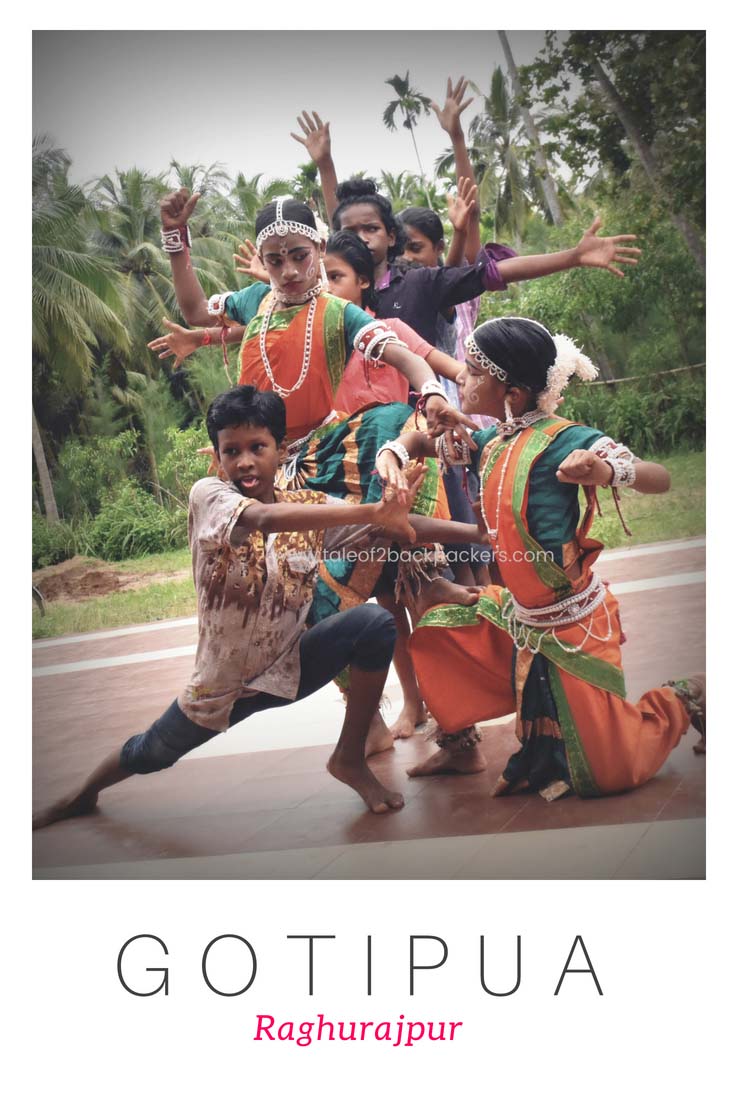
And the joys of the trip did not end here. We were treated with a sumptuous traditional Odiya lunch. The lunch was served on banana leaves. The lunch consisted of Khechuri, a form of rice, sweet dal, Dahi Baigan, mixed vegetables and papad. The main attraction though was Chuda Kadamba, a special sweet dish prepared only in this part of Odisha. This is made from flattened rice cooked in ghee along with dry fruits and served with chhena (cheese curds).


Traditional Odiya Lunch
Spending time at idyllic Raghurajpur will take you to a world of art and worship. The artisans have painstakingly kept alive the traditions of the olden times. Each house practices the art of making pattachitras, tala pattachitra and many other handicrafts. The small toys made from cow dung and paper mache can be bought as excellent souvenirs. Although the family now send the younger ones outside for education, the tradition of art is still carried on.
We had visited Raghurajpur as a part of #Strelingdiscovery. This day trip was organized by Sterling Resort in Puri. Much as our stay was enjoyable at the resort, the day trips conducted by them were equally wonderful.
Here are some pictures of the incredible Pattachitras produced by the talented artisans. Let us know what do you feel of these.

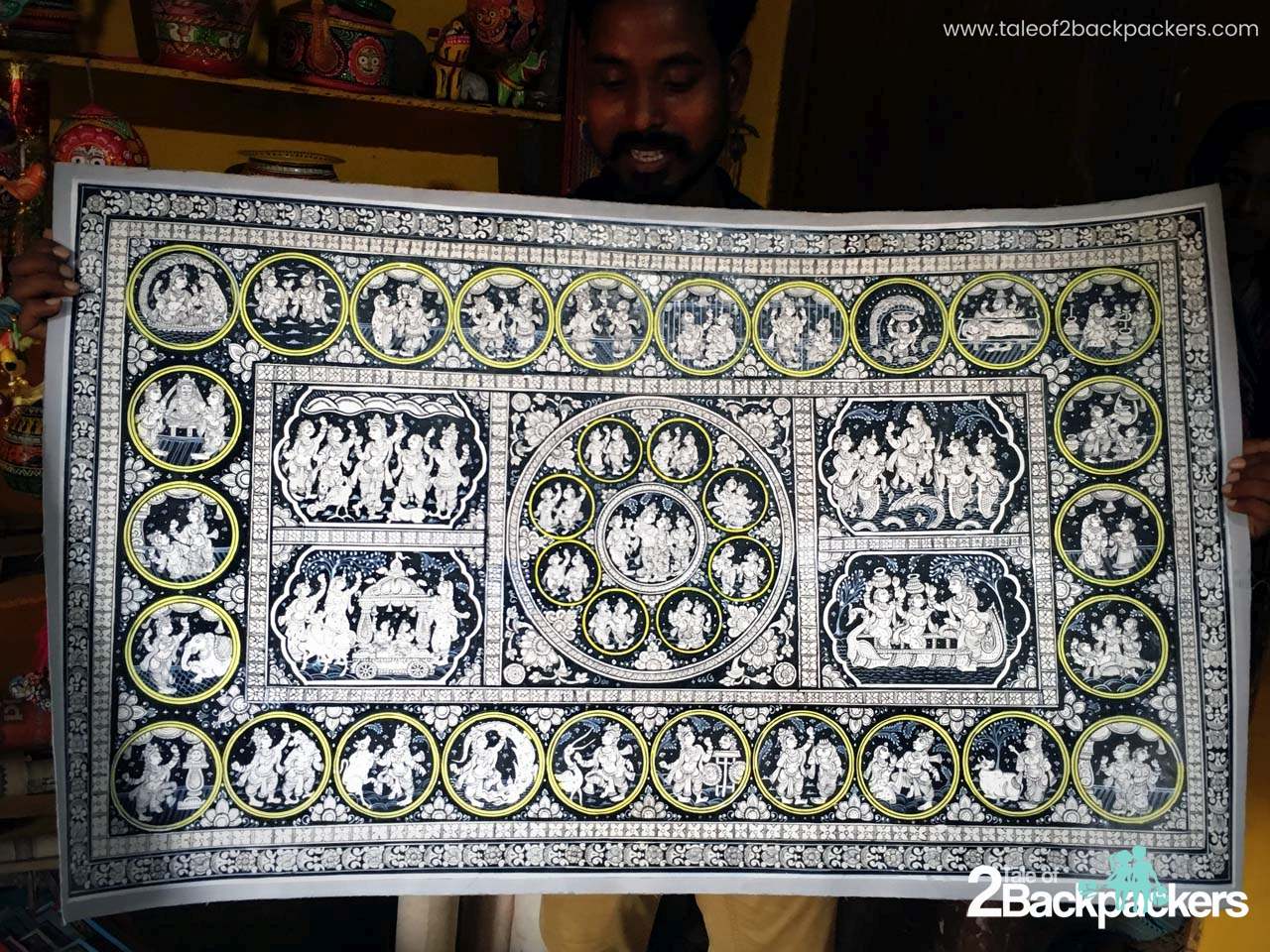





Did you like the post? Please share your views by commenting below. You can buy the pattachitras and other handicrafts from the village itself. Feel free to ask us anything about Raghurajpur and Puri.



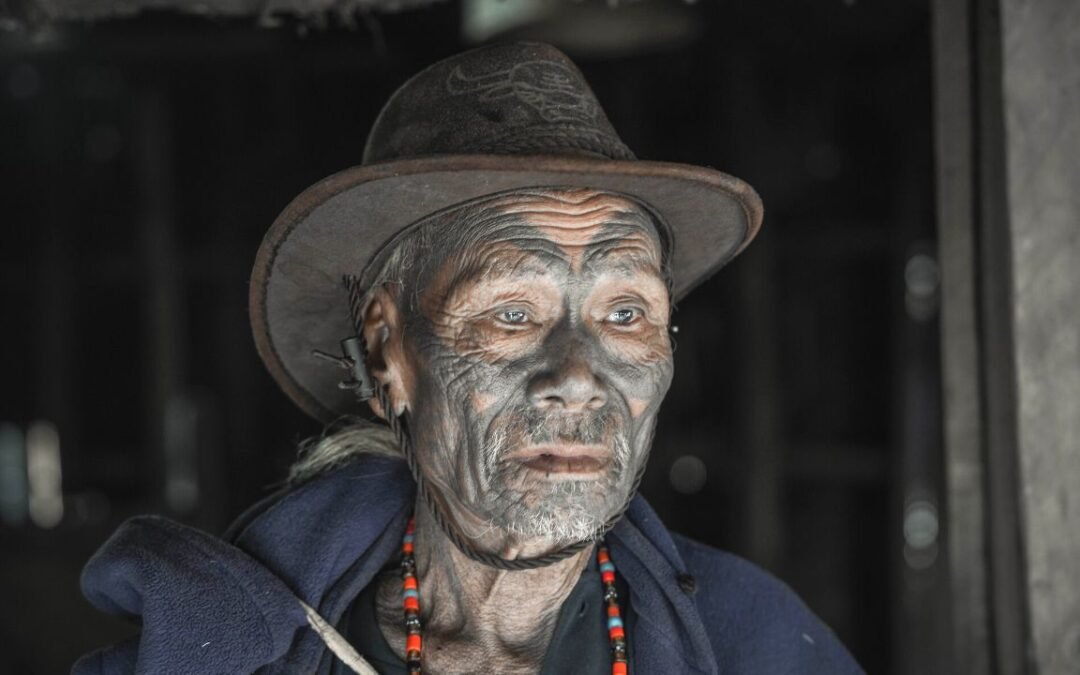
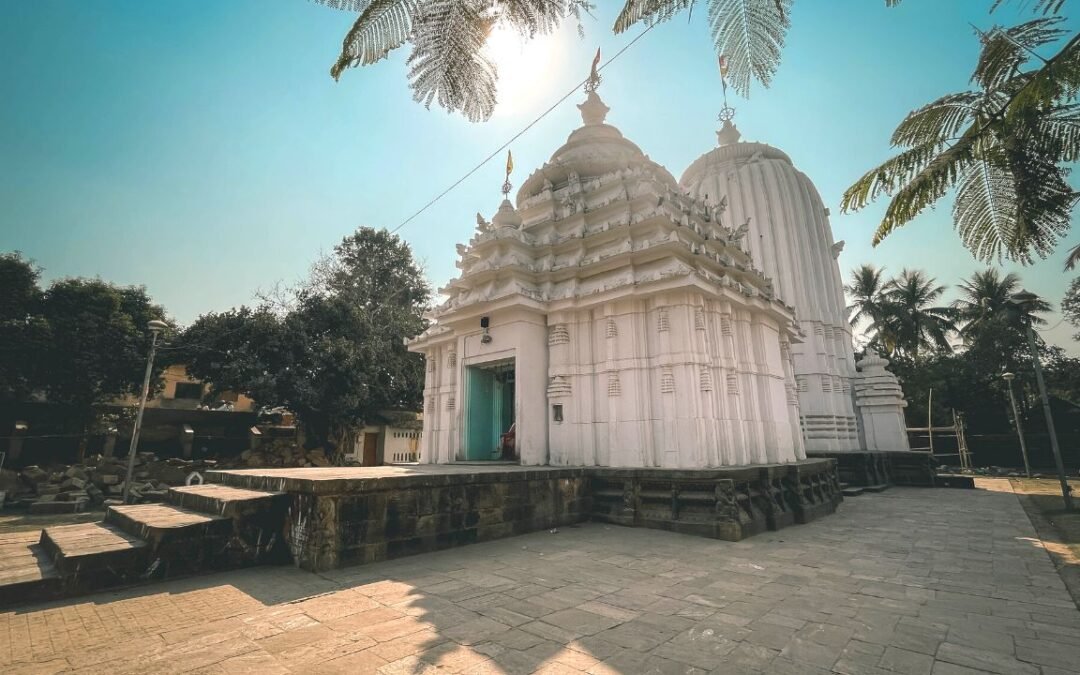
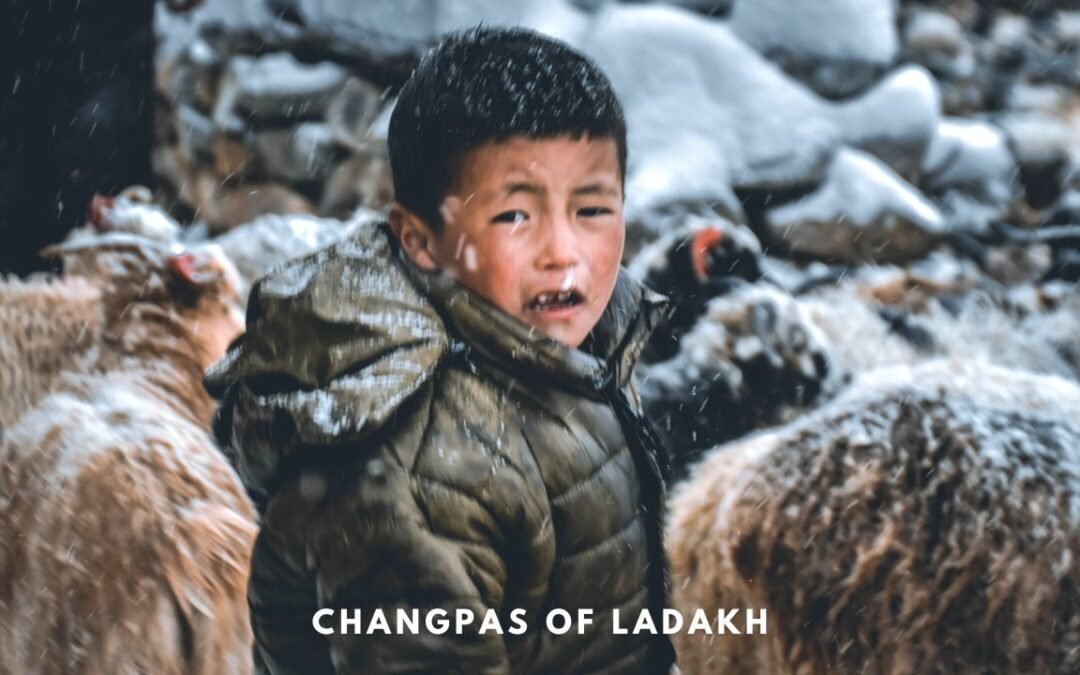

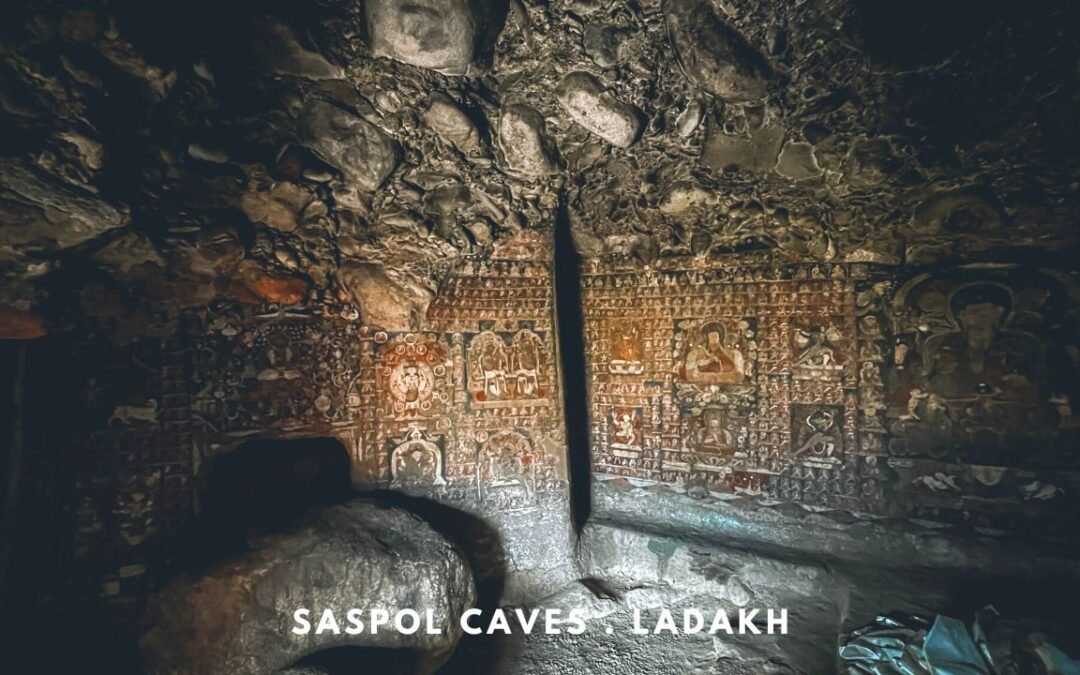


Thank you for this fascinating article about the art and culture of Raghurajpur. It looks like an amazing place to visit.
Such a beautiful post! I’m speechless to see just how much this little village in Odisha has to offer, in terms of arts and crafts. I’ll make it a point to visit this place whenever we are in that part of the country.
Wow! The little village of Raghurajpur is dipped in such a rich history and culture. Those paintings are extremely beautiful and equally fascinating. The Gotipua dance also sounds interesting. I would love to taste their traditional Oriya lunch. I love desserts and I find Chuda Kadamba very tempting.